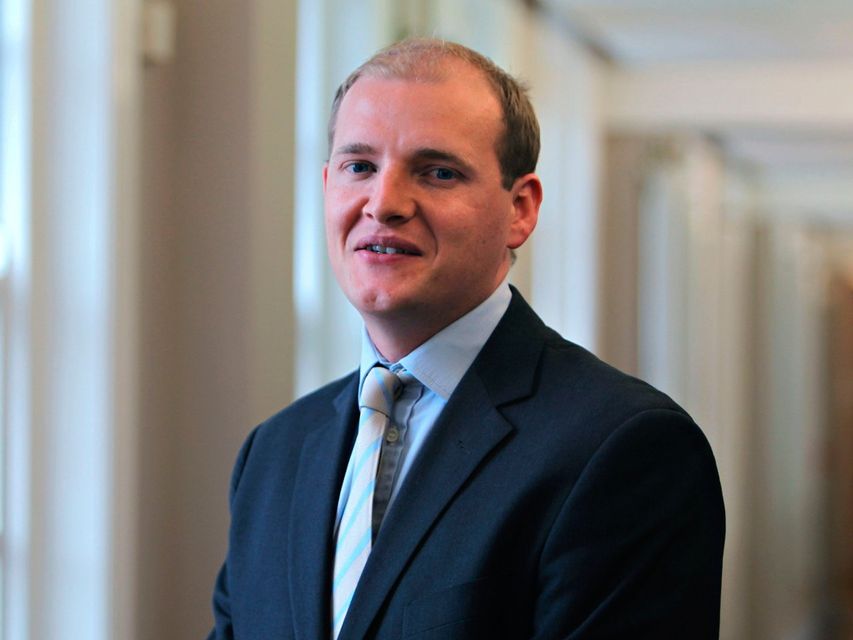Experts across energy to arts on what 2025 has in store
Richard Murphy, energy partner, Pinsent Masons
Richard Murphy, energy partner, Pinsent Masons
A two-speed market has emerged across the island of Ireland for renewables in recent times. Although we have seen some bright spots in Northern Ireland, such as Almac’s recent corporate power purchase agreement with the newly constructed Murley wind farm in Co Tyrone, the recent trend for renewables has largely been ‘go’ in Ireland and ‘no go’ in Northern Ireland, so we need to catch up, and quickly, to deliver on our 2030 targets.
We have a target of 80% of our electricity generation from renewables by 2030 and new carbon budgets set by Stormont. We are currently just over halfway towards the 80% target. Thankfully, the Department for the Economy has been working on a new support scheme for renewables in Northern Ireland and this year should see that design work completed and the launch of the scheme for an auction in early 2026.
Gail Goldie, CEO, Bank of Ireland UK
Gail Goldie, chief executive, Bank of Ireland UK
Sustainability and innovation are key pillars to the future of financial services. At Bank of Ireland, we are focused on sustainable growth and providing the products and services our customers need to meet their financial ambitions and accelerate their sustainability journeys.
The continued adoption and evolution of digital banking requires innovation and investment as we expand and further enhance customers’ options on how, when and where they want to bank with us. This investment in technology and innovation complements more traditional channels where our branch and contact centre colleagues are available to customers when they need us most. Just as we will see further growth in digital payments and transactions, the threat of scams and financial crime remains ever present. Banks will continue to play our part and invest in fraud detection, prevention and education to help protect consumers and businesses.
We will also work closely with the government, as well as online and social media companies, to collectively prevent and eradicate fraud at its source.
Fiona McStay, chief operating officer, People Hawk
Fiona McStay, chief operating officer, PeopleHawk
By 2025, technology will be central to career success, with AI-powered platforms revolutionising how individuals navigate the world of work.
In Northern Ireland, the demand for digitally skilled workers is increasing, particularly in areas such as data science, AI ethics and green technologies. Employers are placing greater emphasis on not only technical expertise, but also adaptability and problem-solving abilities. AI tools are transforming career development by identifying skills gaps and offering personalised pathways to accelerate employability.
Platforms that equip young people and career changers with these capabilities are bridging the divide between education and the needs of industry. They enable individuals to build sought-after skills, develop resilience, and access opportunities more rapidly than ever before.
For Northern Ireland’s workforce, embracing these innovations will be key to remaining competitive on a global scale.
With tailored solutions and AI unlocking potential, 2025 promises a digitally skilled, inclusive and agile workforce ready to thrive.
Lucy Dougan, marketing manager, Belfast Exposed
Lucy Dougan, marketing manager, Belfast Exposed
In 2025, the arts sector must showcase its passion, innovation and collaboration, demonstrating its transformative impact on communities.
This year will be a pivotal one for Belfast Exposed, Northern Ireland’s leading photography centre. At our core is a commitment to community and using photography to amplify unheard voices.
Despite significant funding challenges for the arts in NI, research shows that every £1 invested in Belfast Exposed delivers £4.83 in social value.
In the coming year we aim to welcome those who may not have felt comfortable engaging with the visual arts, demystifying the experience of exhibitions, galleries and workshops. A key focus will be cause-oriented art, sparking dialogue and exploring creative solutions around critical social, political and environmental issues. An example of this is our work in addressing NI’s mental health crisis via ground-breaking exhibitions and therapeutic programmes delivered through community groups and healthcare trusts.
Brian Morrison, owner, Brian Morrison Photography
Brian Morrison, owner, Brian Morrison Photography
As we move into 2025, the demand for powerful visual content is greater than ever. Strong, compelling imagery grabs attention, generates likes, reposts and shares, making visually impactful content a critical tool for businesses aiming to cut through the noise. Commercial clients increasingly want their content to feel real and human, likely as a reaction to the surge in AI-generated imagery. While artificial intelligence offers useful tools, its application needs to be subtle.
Consumers, equipped with apps and filters of their own, are highly attuned to spotting images that feel artificial or overly manipulated. Drone imagery has become increasingly popular, particularly in the construction and tourism sectors. Last year, clients were requesting both footage and stills, combining formats to enhance their campaigns and this will continue and grow in 2025.
Diane Poole OBE, head of commercial, Travel Solutions
Sixty-eight percent of the UK population are planning to travel abroad over the next 12 months. And research also shows the importance of the experiences customers have on their break.
We are all looking forward to our next breakaway, whether it is a short break, long-haul, sun, cruise, ski or escorted tours. There are so many options to whet everyone’s appetite.
January is traditionally one of the busiest booking periods of the year, and exhibitions like Holiday World Belfast offer a great platform to receive expert advice on your next dream destination.
Top European destinations include Majorca, Spain, Portugal, Italy and Greece. Long-haul, meanwhile, features New York, Nashville, Las Vegas, Tokyo and Thailand. Winter-experience city breaks — Christmas markets, Northern Lights — are showing a 3% increase, whilst search engines revealed a 300% increase for colder holidays in 2024 compared to 2023.




